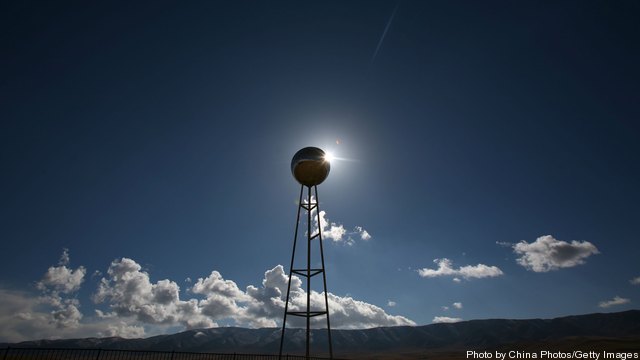
The power industry can use information technology to handle the volatility of renewable energy resources rather than having to back up renewable generation with duplicative fossil fuel power.
“Don’t spend twice by building renewables and then building spinning natural gas reserves on top of that,” Honeywell Vice President of Global Energy Services Jeremy Eaton told Breaking Energy. “It’s a little more complicated than saying ‘just add renewables.'”
The focus of smart grid implementation has been on a large scale deployment across huge service areas, Eaton said, and while widespread uptake of data-collecting technology is an important first step in energy companies becoming more responsive and efficient, the next generation of technology should focus on more-targeted solutions.
The lack of insight into targeted and timely shifts in usage and in the availability of matching solar or wind energy generation resources means firms facing increased deployment of intermittent renewable generation often have to build significant amounts of backup generation fired by natural gas or other fossil fuels to guarantee reliability.
Read more about intermittent resources in “The Reality Of Wind Energy.”
“How to take advantage of renewables in a truly green way is a huge question given the European problem of nuclear retirements,” Eaton said. Germany’s government has said it plans to steadily retire its substantial nuclear generation fleet in the wake of the accident at Japan’s Fukushima plant in early 2011, and several other European governments have also begun backing away from nuclear generation even as their renewable energy and climate change commitments limit their ability to build significant amounts of new fossil fuel generation.
“The question becomes: How do we take advantage of renewables in a green way?” – Eaton
The Green Use of Renewables
Honeywell has a number of projects currently ongoing around the world that can boost the efficiency of energy investments and usage, including a smart grid project in the Thames Valley area west of London that is part of a larger project awarded to Scottish and Southern Energy Power Distribution by the UK energy regulator Ofgem.
For more on that project, as well as Honeywell smart grid projects in Hawaii and China, read more here.
While further smart grid and demand response technology implementations at a time of tight budgets for both governments and consumers can be a challenging case for companies to make, Eaton said access to the right demand response technology can limit or delay the need to invest in even more-expensive large-scale transmission and generation upgrades.
The industry, governments and consumers have to ask themselves what additional investments they need to make to take advantage of the investments already made, Eaton said.
